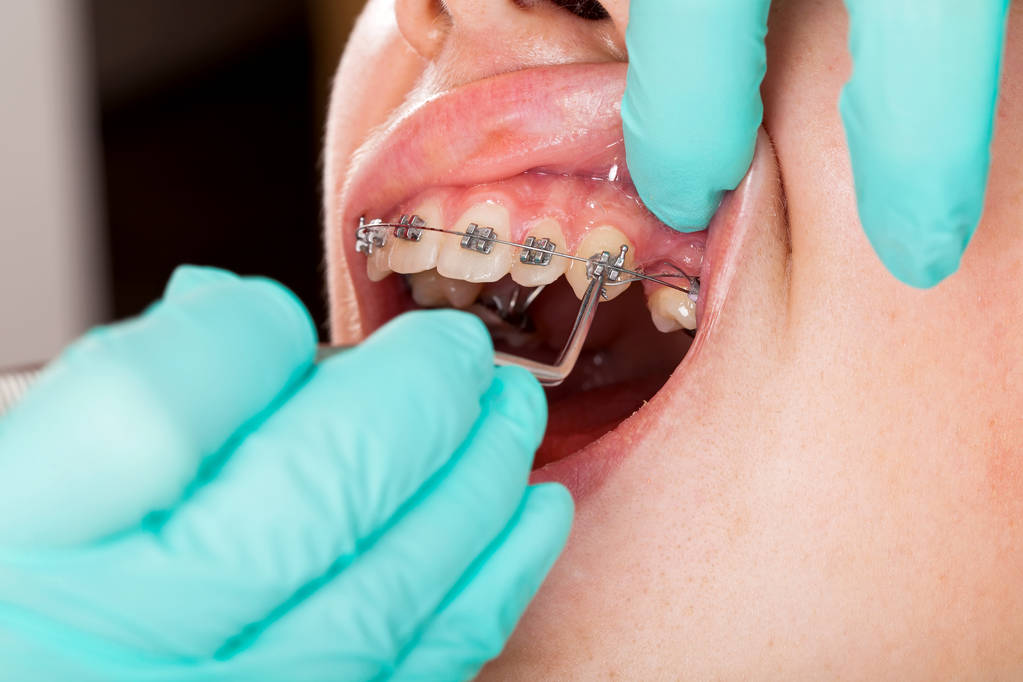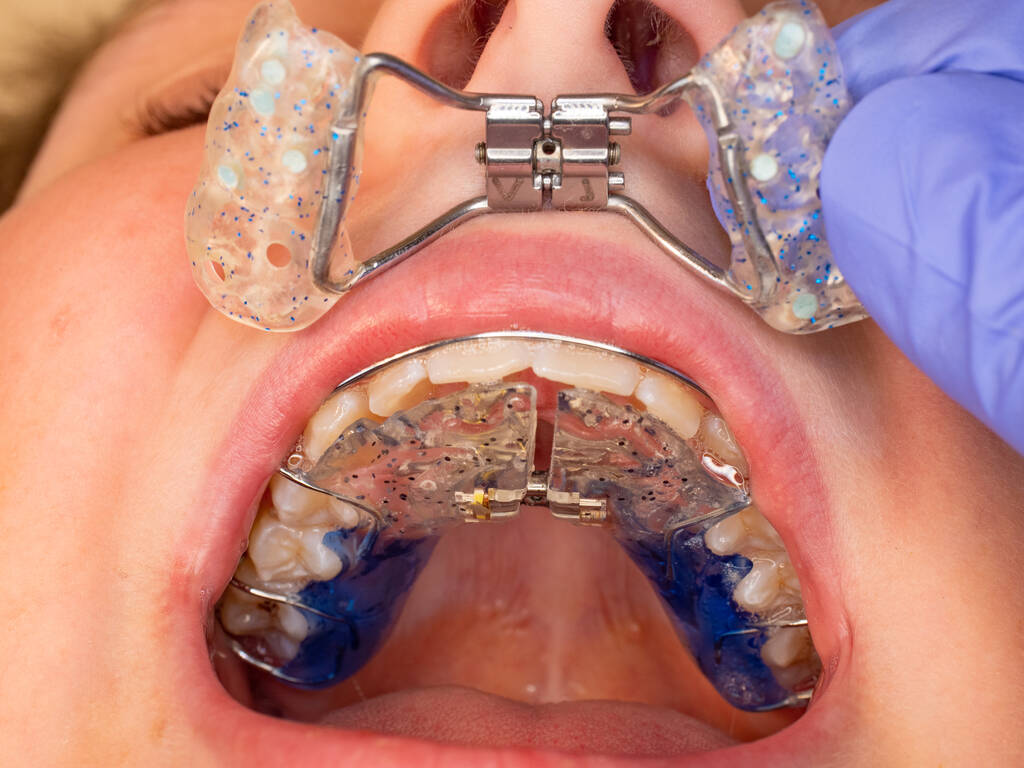Permanent Retainer The Complete Guide to Lifelong Smile Maintenance

Finishing your orthodontic treatment whether with braces or clear aligners is a huge milestone but it’s not the final step in your smile journey. One of the most critical phases begins after the active treatment ends. This stage is call retention and it is vital for keeping your teeth in their new straight positions. That is where permanent retainers come into play. These small but powerful devices can make all the difference in preserving the beautiful results you work so hard to achieve.
What Is a Permanent Retainer?
A permanent retainer also known as a bond retainer fix retainer or lingual retainer is a thin metal wire usually made of stainless steel or a flexible braid wire that is cement to the back of the teeth typically the lower front six (canine to canine) and sometimes the upper front teeth.
- Unlike removable retainers which must be worn according to a schedule a permanent retainer remains in place 24/7 providing constant support to prevent your teeth from shifting back to their original positions.
Where It’s Place
- Lower arch (most common) Because the lower front teeth are the most prone to crowding and relapse.
- Upper arch: Less standard due to biting surface interference but use in some cases.
Why Permanent Retainers Are Use
Orthodontists often recommend permanent retainers when long term stability is a concern. These fix tools eliminate the issue of patient follow through which is familiar with removable retainers.
High Risk of Relapse
Some teeth shift easily especially the lower front ones. Jaw growth tongue pressure teeth grinding and habits can all move teeth again. Permanent retainers block this movement at all times.
Crowding Before Treatment
If you had tight or overlapping teeth before treatment your teeth may tend to return to their original position. Like rubber bands they pull back to old spots. A permanent retainer keeps this from happening slowly over time.
- Additionally when teeth rotate or shift to fit into a narrow arch the surrounding bone and tissue require time to adjust to this new position. A fix retainer helps complete this process.
Non Compliant Patients (or Busy Adults)
Removable retainers work only when use. Many people forget lose or stop using them. A permanent retainer requires no additional action beyond basic hygiene. It works for anyone who might skip wearing a retainer.
- Permanent retainers remove the element of human error offering a worry free retention solution for both orthodontists and patients.
Stabilizing Rotate or Twist Teeth
Teeth that were rotate (turn in their sockets) before treatment are more likely to relapse than those that were simply out of line. This is due to the tension in the surrounding gum fibers known as periodontal ligaments which can “pull” the tooth back over time.
Long Term Retention Goals
Some orthodontists now believe that lifetime retention whether fix or removable is necessary for many patients due to the natural shifting of teeth with age. A permanent retainer provides a passive maintenance free solution to meet this long term goal especially for the lower front teeth which are known to shift even in people who never had braces.
Genetic and Skeletal Considerations
In some instances a patient’s genetic makeup or jaw structure may predispose them to relapse. For example individuals with intense tongue pressure narrow dental arches or deep bites may require lifelong support to prevent their teeth from shifting. A fix retainer offers that add reinforcement where it’s need most.
Athletic or Speech Relate Needs
In athletes musicians (especially those who play wind instruments) or individuals who use their mouths in professional settings (such as speakers or singers) removable retainers may interfere with daily activities. A permanent retainer does not affect speech or performance and becomes completely unnoticeable within a few days of bonding.
Multiple Orthodontic Treatments
Patients who have had to undergo braces or aligners more than once are excellent candidates for permanent retainers. If teeth have relapse before there is a high chance they will again unless consistent long term retention is use.
How Permanent Retainers Are Install

Permanent retainers also known as bond or fix retainers are thin wires that are permanently attach to the back of your teeth usually the lower front teeth and sometimes the upper ones. The installation process is quick painless and typically complete in a single visit to the orthodontist. Here is a step by step look at how the procedure is done
1. Evaluation and Preparation
Before installation your orthodontist will assess your teeth to ensure they are in the correct position. A permanent retainer is only apply after your braces are remove or after your aligner treatment has been complete. The teeth must be clean dry and well align.
Your orthodontist may take a scan or impression of your teeth to custom fit the retainer wire. In many cases the wire is pre bent to fit the exact curve of your teeth ensuring a snug and discreet fit.
2. Tooth Cleaning
The back surfaces of your teeth where the retainer will be bond are thoroughly clean and dry. This step is crucial to ensure a strong and lasting bond. Any plaque or residue is remove using a polishing paste or a mild abrasive tool.
3. Etching the Teeth
A mild acidic solution (usually in the form of a gel) is apply to the tooth enamel where the wire will be attach. This “etching” process roughens the surface slightly which helps the bonding material adhere better. After a few seconds the etching gel is rinse off and the teeth are dry again.
4. Applying Bonding Agent
A thin layer of dental bonding agent (a type of adhesive) is apply to each tooth that will hold the retainer. This adhesive creates a strong connection between the enamel and the retainer wire.
5. Placing the Retainer Wire
The orthodontist carefully places the custom bent metal wire against the back of the teeth. It’s held in place while small dots of dental composite (a tooth color resin) are apply over the wire on each tooth. Typically 4 to 6 teeth are involve.
6. Final Adjustments
Once bond the orthodontist checks to ensure the wire is not interfering with your bite and that there are no sharp edges. Any excess resin is polish away for a smooth finish. The retainer should feel comfortable and unnoticeable when you close your mouth.
7. Aftercare Instructions
- How to Clean Around the Retainer with Floss Threaders or Interdental Brushes.
- Foods to avoid (hard or sticky items that could dislodge the wire).
- The importance of regular dental checkups and cleanings.
Advantages of a Permanent Retainer
Constant Retention
One of the biggest perks of a permanent retainer is that it never takes a break. Because it’s permanently bond to the back of your teeth it is always working whether you are awake asleep eating or completely unaware of it. Unlike removable retainers that require daily use and can be forgotten this one silently does its job around the clock ensuring your smile stays in place.
Completely Invisible Discreet by Design
A permanent retainer is attach to the lingual (tongue facing) side of your teeth making it virtually invisible to others. You can smile, laugh, talk, and take pictures with confidence knowing that your orthodontic care remains private. It is especially ideal for professionals teens or anyone who prefers a low profile way to maintain alignment.
No Discipline Required
Life gets busy and it’s easy to misplace or forget to wear a removable retainer. With a permanent retainer you do not need to worry about those daily responsibilities. This makes it a perfect solution for children teens or adults with hectic schedules who want to maintain their orthodontic results without hesitation.
Long Term Stability
When properly care for a permanent retainer can last for many years sometimes even decades offering unmatched stability. It prevents your teeth from shifting back into their pre braces position helping to preserve the time money and effort you invest in your orthodontic treatment. With regular dental checkups and good hygiene it can be a lasting safeguard for your straight smile.
Comfortable and Custom Fit
Permanent retainers are custom made to fit your teeth precisely ensuring they feel natural in your mouth after the initial adjustment period. Most people forget it is even there after a few days. No bulky plastic or wires are pressing against the roof of your mouth or affecting your speech.
Less Risk of Accidental Damage or Loss
Unlike removable retainers which can be accidentally thrown away broken or damage by pets (yes it happens!) permanent retainers are fix and secure. You won’t have to deal with the unexpect costs of replacements or repairs due to everyday mishaps.
Disadvantages of a Permanent Retainer
Oral Hygiene Challenges
Cleaning around a permanent retainer is harder. Flossing takes more time and needs special tools. Poor technique can lead to the accumulation of trap food plaque and oral health issues.
Plaque & Tartar Build Up
Plaque and tartar can build up quickly around the wire raising the risk of cavities gum issues and bad breath. Regular cleanings are essential.
Breakage Risk
Although durable permanent retainers can loosen or break over time due to chewing or grinding. If unnoticed this can cause teeth to shift. Regular dental checkups help detect issues early and maintain your dental alignment.
Irritation
Some people may experience tongue irritation initially as the wire rubs against it especially when speaking or eating. Most people adjust within a week but minor discomfort may persist if the wire is not smooth.
Long Term Commitment
Permanent retainers stay in for years sometimes for life. They offer less flexibility and require consistent hygiene which can be challenging for some.
How Long Should a Permanent Retainer Stay In?

Permanent retainers also known as fix or bond retainers are design to keep your teeth in place after orthodontic treatment typically after braces or clear aligners. Unlike removable retainers they are bond to the back of your teeth using a strong dental adhesive and they can last for many years.
There isn’t a universal timeline for how long a permanent retainer should remain in place. In many cases people keep them for 10 to 20 years or the rest of their lives. Some orthodontists recommend wearing them indefinitely especially if there is a high risk of your teeth shifting back to their original position. You may be advise to keep your permanent retainer long term.
- You had major orthodontic corrections or jaw alignment issues.
- Your teeth have a natural tendency to move especially the lower front teeth.
- You find it difficult to wear a removable retainer consistently.
- You have a history of relapse where your teeth move after previous treatment.
That said permanent does not mean problem free. Over time the dental adhesive can weaken or wear out the wire can break or bend and plaque or tartar can build up if the area is not clean properly. It is essential to have your retainer check regularly by your orthodontist or dentist even if everything appears to be in order.
Proper Care and Maintenance
A permanent retainer may be small but it requires extra attention to maintain your smile’s health. Unlike natural teeth it can trap food and plaque more easily. Daily brushing careful flossing (with a threader or super floss) and using a water flosser can make a big difference. Regular dental checkups are essential to ensure the wire stays secure and your gums remain healthy.
Brush with Care
Use a soft bristle brush.
Angle above and below the wire.
Brush gently but thoroughly twice daily.
Floss Like a Pro
Use a floss threader or super floss.
Slide under the wire between each tooth.
Do not skip prevents plaque and gum issues.
Water Flosser Boost
A water flosser can flush out debris.
Great for tight spaces and gum health.
Use it daily or as a supplement to your flossing routine.
Regular Dental Checkups
See your dentist every 6 months.
They will check for damage and clean around the wire.
Early fixes prevent long-term problems.
Stay Alert for Issues
Watch for loose wires gum swelling or discomfort.
Report problems to your orthodontist quickly.
A minor issue can quickly escalate into a major one.
Can a Permanent Retainer Be Remove or Replace?
You can choose to have your permanent retainer remove at any time but it should only be done under the guidance of your orthodontist. If remove you will almost certainly need to wear a removable retainer especially at night to maintain your alignment.
Some reasons for removal
- Recurrent breakage
- Severe tartar buildup
- Gum irritation or recession
- Changing to a removable retainer later in life
Permanent Retainer vs. Removable Retainer

Orthodontists often recommend various types of retainers tailor to a patient’s specific needs. Permanent retainers are bond to the back of the teeth offering continuous support usually for the lower teeth where shifting is more common. Removable retainers on the other hand can be remove for cleaning or eating and are often use to retain the position of the upper teeth. many experts favor a hybrid approach fix retainers on the bottom for long term stability and removable ones on top for flexibility and ease of use.
FeaturePermanent RetainerRemovable Retainer
Visibility Invisible (behind teeth) Visible when worn
Wear Time 24/7 Varies (often nights)
Hygiene Harder to clean Easier to clean
Risk of Loss None High (can be lost)
Comfort may cause tongue irritation. Comfortable when worn properly
Maintenance Professional monitoring can be clean at home
Is a Permanent Retainer Right for You?
A permanent retainer also call a bond or fix retainer is a thin metal wire cement to the back of your teeth typically on the lower front teeth. Unlike removable retainers it works continuously to prevent your teeth from shifting. But is it the right fit for your lifestyle and oral health?
You Might Be an Ideal Candidate If
- You had substantial crowding rotation or spacing before braces. Teeth that were once significantly misalign are more likely to revert to their original position without continuous support.
- You struggle with consistency when using removable retainers. If your retainer often ends up lost forgotten or chew by the dog a fix solution removes the guesswork.
- You want long term results with minimal daily effort. Once bond a permanent retainer silently maintains alignment without interrupting your routine.
- You are comfortable with advance hygiene techniques. Flossing around a permanent retainer requires special tools such as floss threaders interdental brushes or a water flosser and the discipline to use them regularly.
It Might Not Be the Best Option If
- You find flossing difficult or tend to skip it altogether. Fix wires make standard flossing impossible which can lead to plaque buildup and decay if not appropriately manage.
- You have a history of gum issues. Retainers can trap debris near the gumline which may worsen inflammation or contribute to recession if not carefully monitor.
- You are a heavy grinder or clencher (bruxism). Continuous pressure from grinding can cause the wire to distort or snap necessitating frequent repairs.
Conclusion
Taking care of your permanent retainer is crucial to protecting your smile in the long term. With consistent daily cleaning and regular dental checkups you can prevent plaque buildup gum problems and damage to the retainer itself. A little extra effort each day goes a long way in keeping your teeth straight healthy and strong for years to come.
